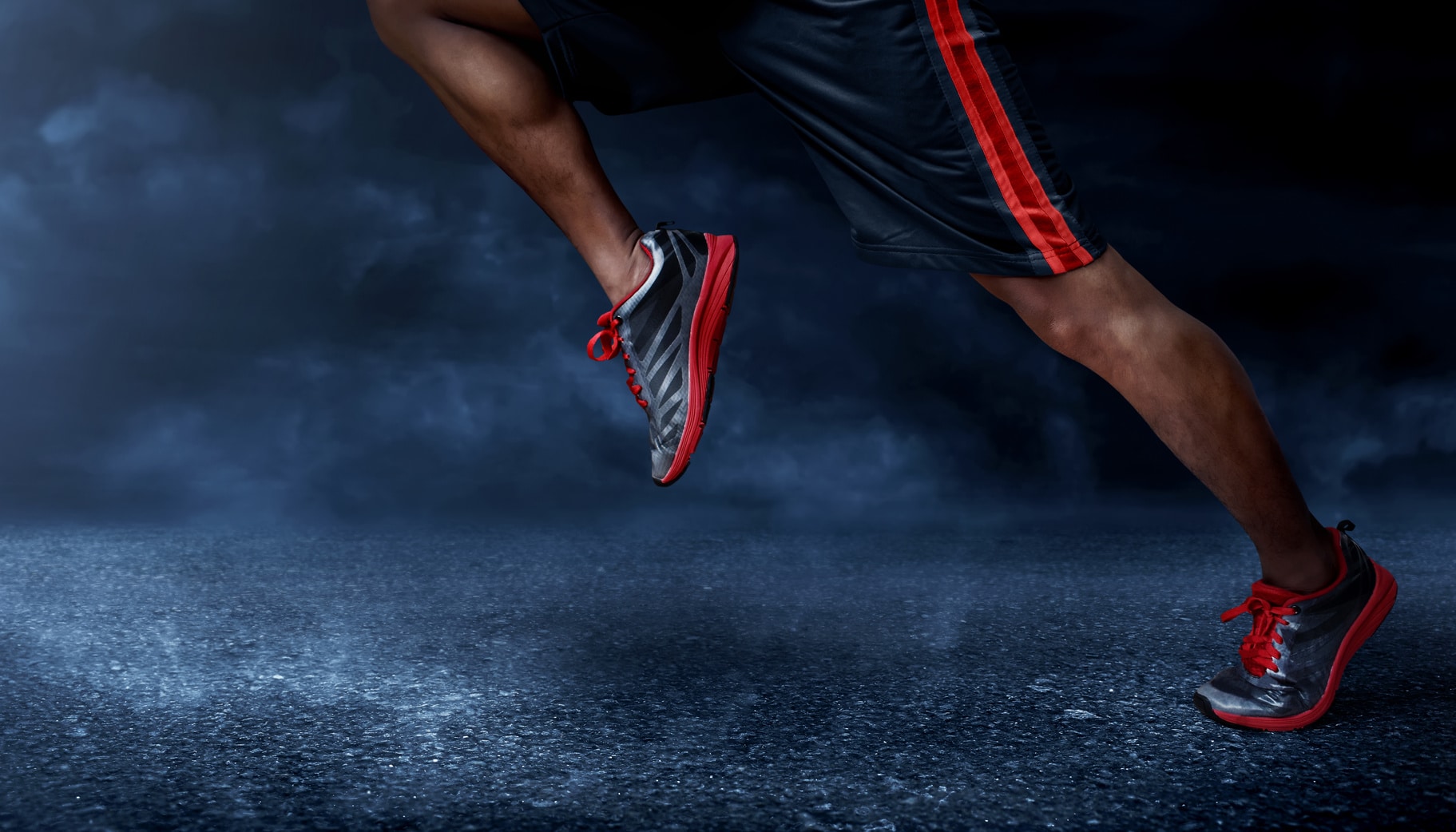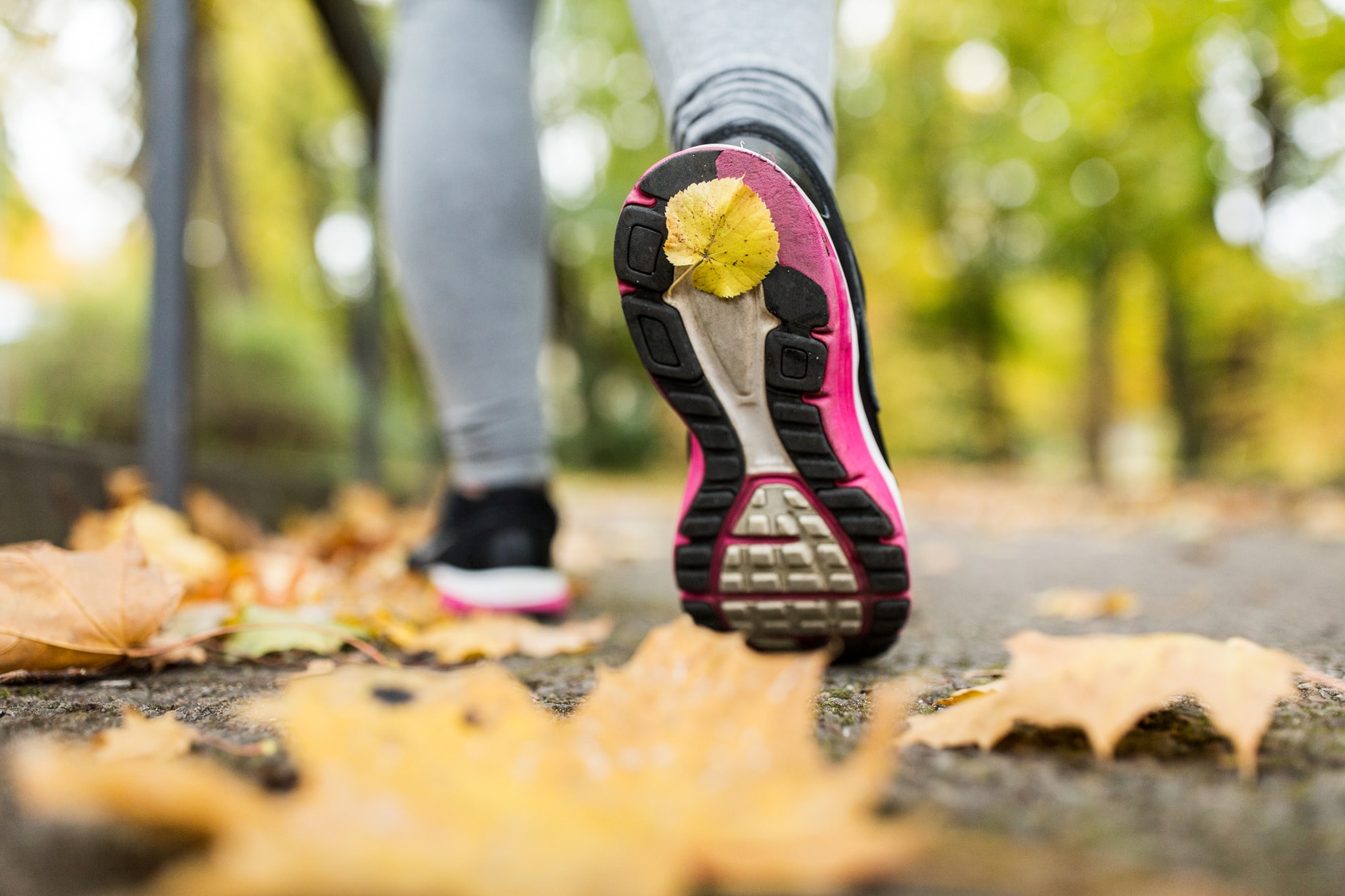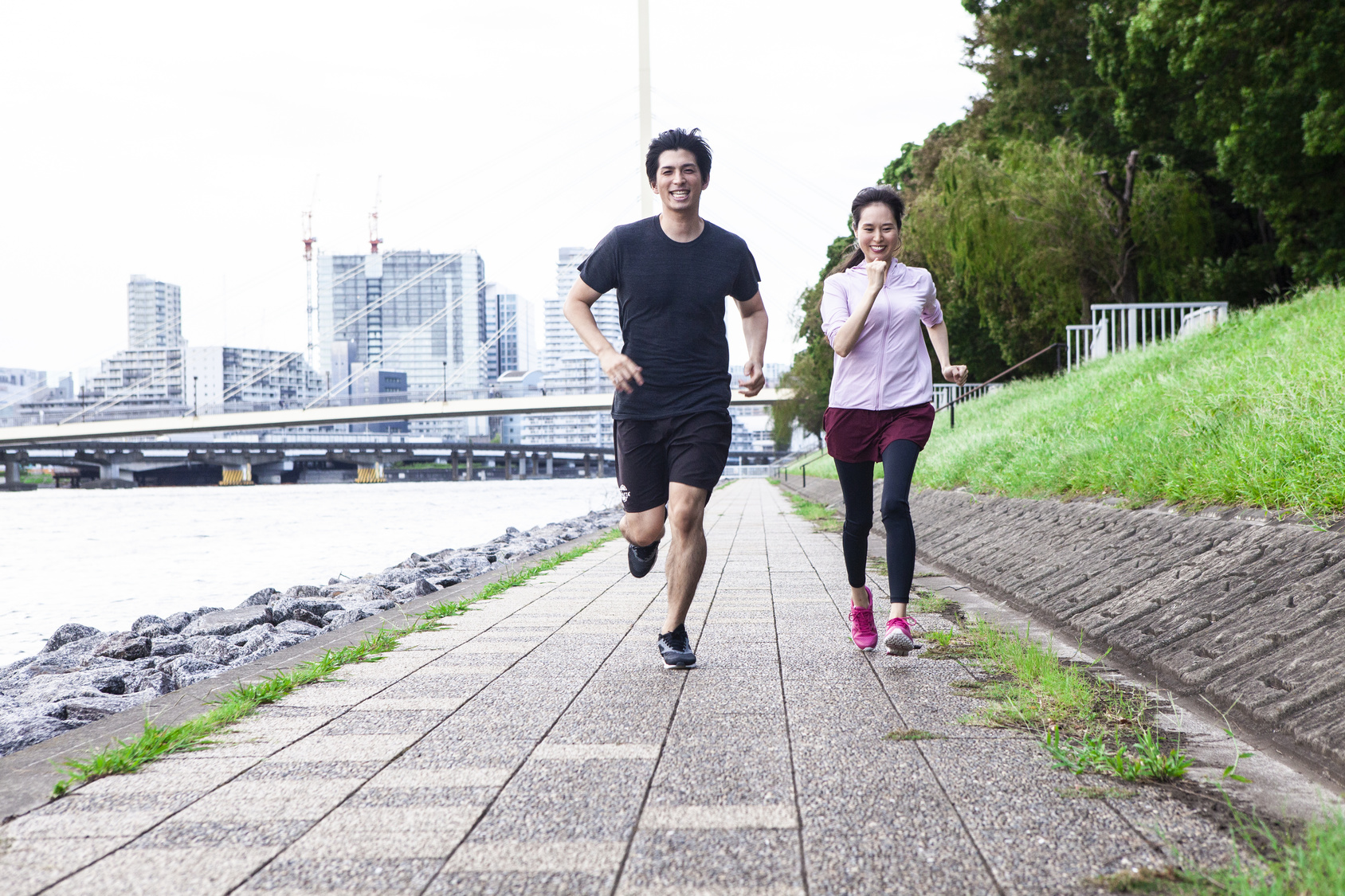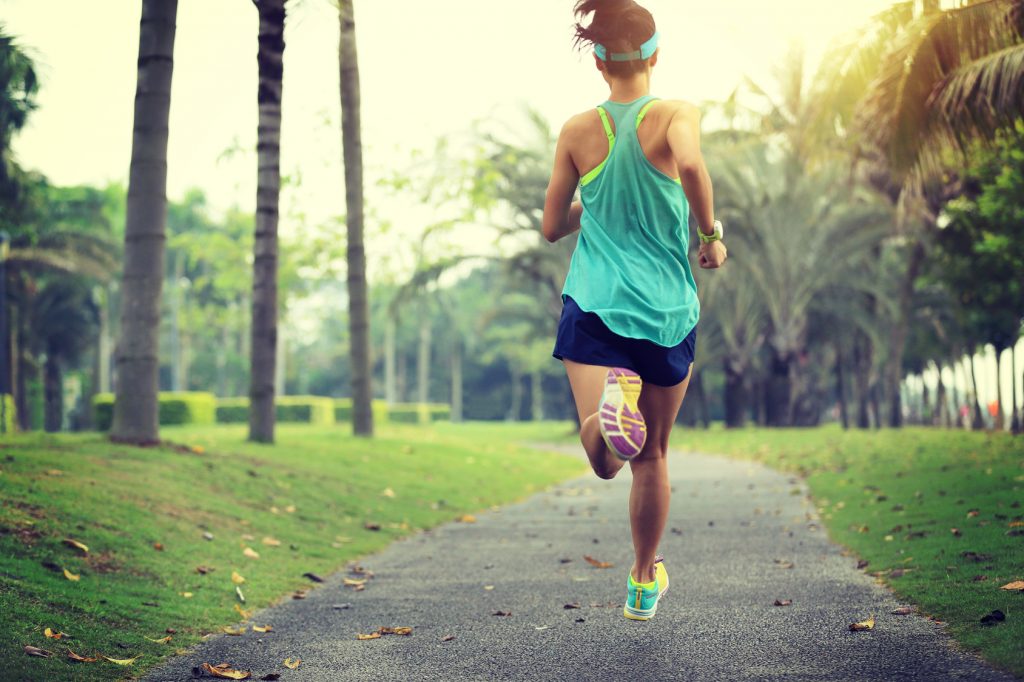Ready to dive into the fascinating world of the running gait cycle? Awesome, because you’ve stumbled upon the perfect spot to satisfy your curiosity.
Get ready for a (slightly technical) rollercoaster of knowledge in this short but insightful blog post. We’ll delve into the nitty-gritty of running gait, explore the mind-boggling biomechanics behind the gait cycle, uncover the various phases involved, and even uncover the secrets to analyzing your own running gait cycle. Why? So you can turbocharge your running form and leave your competition in the dust!
Excited? I thought so. Buckle up, my friend, because it’s time to hit the ground running. Let’s do this!
The Importance of The Running Gait Cycle?
Picture yourself on a run, your feet hitting the ground with each stride. The gait cycle encompasses all the phases your feet go through, from the moment they make contact with the earth to the instant they leave it again.
But why should you care about the gait cycle? Well, the research is in, and it shows that understanding this cycle can have a profound impact on your running journey.
Let me share some fascinating studies with you.
In a recent study published in the Journal of Sports Sciences, researchers found that analyzing an individual’s gait cycle can help determine the most suitable running shoes. Different foot mechanics require different types of shoes, and by understanding your gait, you can ensure that you’re lacing up the perfect pair to support your unique stride.
But it doesn’t stop there. Another research paper published in the Journal of Biomechanics revealed that studying the gait cycle can also shed light on your running technique and biomechanics. By examining how your body moves during each phase of the cycle, you can identify areas for improvement and fine-tune your form to maximize efficiency and reduce the risk of injury.
And speaking of injuries, let me introduce you to an intriguing metaphor. Think of your gait cycle as a detective story, with clues scattered along the way. When you assess the way you run, you become a detective investigating the potential causes of any nagging pains or recurring injuries.
What is The Running Gait Cycle?
Let’s dive deeper into the mechanics of the gait cycle, specifically focusing on the lower extremities—the magnificent legs that propel us forward on our running adventures.
Picture this: as one foot strikes the ground, the gait cycle begins its intricate journey, and it doesn’t end until that same foot strikes the ground again. It’s a continuous loop of motion, an enchanting cycle that keeps us in motion.
Now, let’s break it down further. The gait cycle can be divided into two primary phases, each with its own unique charm.
First, we have the Stance Phase. This is the moment of connection when your foot makes contact with the ground, firmly planting its presence.
And then comes the Swing Phase, the magical moment when your foot takes flight, soaring through the air with grace and lightness.
The phases of running gait includes both a stance and swing phase.
The Stance Phase Of Running
When it comes to performance and injury prevention, the stance phase takes center stage. It’s like the grand finale of a breathtaking performance, where your foot and leg bravely bear the weight of your body, ensuring stability and grace with each step.
Now, let’s dig deeper into the details. The stance phase encompasses a significant portion of both the walking and running gait cycles, although the exact proportions may vary like the ebb and flow of a river. During walking, the stance phase accounts for approximately 60 percent of the entire cycle, while in running, it occupies roughly 40 percent. However, these numbers are not set in stone, my friend. They sway and shift depending on the speed at which you walk or run, adapting to the rhythm of your stride.
But let’s not forget the intriguing stages within the stance phase. It’s like a story unfolding in three captivating acts, each with its own significance and role.
- Act one: Initial Contact. This is the moment your foot meets the ground, marking the beginning of the stance phase. It’s like the opening scene of a play, where anticipation and excitement fill the air. Your heel takes the lead, gracefully embracing the earth as the rest of your foot follows suit.
- Act two: Midstance. As your weight settles on your grounded foot, the spotlight shines on stability and balance.
- It’s like a delicate balancing act, where your body aligns itself, ensuring optimal support and weight distribution. This is the moment where your leg acts as a sturdy pillar, supporting your forward momentum.
- Act three: Propulsion. This is the grand finale, my friend. As your toes leave the ground, it’s like a burst of energy, propelling you into the next stride. It’s the culmination of power and grace, as your leg extends, ready to conquer the next step on your journey.
Initial contact
This subphase, also known as foot strike, is where the magic begins. Imagine your foot, poised in the air, ready to make its mark. Whether it’s a heel strike, midfoot strike, or forefoot strike, the choice is yours, influenced by your running speed, unique style, and individual biomechanics.
As your foot gracefully connects with the ground, initial contact sets the stage for the cushioning phase of the gait cycle. It’s like sinking into a soft, plush cushion, absorbing the impact and ensuring a smooth transition.
Your foot pronates at the subtalar joint, gently rolling inward, while your knee flexes slightly and your leg internally rotates, working harmoniously to minimize the stress forces from the impact. It’s a symphony of movement, a well-orchestrated ballet that protects your body from the jarring effects of each step.
The Toe Off/ Propulsion
Imagine this: as your heel gracefully lifts off the ground, a surge of energy courses through your legs. It’s like a coiled spring, ready to release its power. The muscles on the back of your leg—the mighty Gastrocs, Soleus, and Achilles Tendon—spring into action, contracting with strength and precision.
This contraction results in a mesmerizing movement known as plantar flexion, where your ankle bends, pushing your toes off the ground. It’s like a graceful takeoff, launching you into the next stride with purpose and determination.
This subphase accounts for the final 35 percent of the stance phase. It’s the climax of the gait cycle, where momentum reaches its peak. But here’s a common pitfall that beginners often stumble upon—a tendency to lean too far forward during the toe-off. Imagine a leaning tower, off-balance and struggling to find its footing. Leaning excessively can disrupt your stride angle and limit efficiency, hindering your progress towards optimal performance.
Instead, let’s set you up for success. Visualize yourself standing tall, but rather than leaning from the waist, aim for a slight, controlled lean from the ankles.
It’s like finding the sweet spot of balance, where your body aligns itself in perfect harmony with the laws of physics. This subtle lean allows for efficient forward propulsion, optimizing your stride and enhancing your overall running efficiency.
The Swing Phase Of Running
The swing phase—the second phase of running, where your foot takes flight and propels you towards new horizons. It’s like the moment of suspension in a dance routine, where your body gracefully glides through the air, free from the constraints of the ground.
During the swing phase, your foot becomes a pendulum, swinging forward with purpose and grace. Picture it, my friend—like a pendulum’s rhythmic motion, your leg effortlessly cycles through, preparing for the next foot strike. It’s a dance of anticipation, as your foot hovers in the air, eagerly awaiting its reunion with the ground.
As this phase commences, toe off marks the starting point—a pivotal moment where your toes push off the ground, propelling your leg into motion. It’s like the flick of a switch, igniting a chain reaction of fluid movement. The swing phase carries you forward, inching closer to the next chapter of your gait cycle.
Now, here’s an interesting tidbit—the swing phase accounts for the majority of the running gait, constituting a significant 60 percent, compared to the 40 percent in walking. It’s a testament to the dynamic nature of running, where your body becomes a symphony of motion, propelling you forward at a faster pace.
While the swing phase may seem less relevant in terms of preventing injuries, as there is no weight borne through the joints and muscles, it still plays a vital role in the intricate biomechanics of running. It’s like the intermission between acts, where your body readies itself for the next performance.
The focal point of the swing phase is a captivating phenomenon known as the forward descent. Imagine your foot gracefully carried forward, positioned for its next weight-bearing moment. Both the knee and foot flex, like synchronized partners in a duet. It’s a harmonious collaboration, setting the stage for a seamless transition into the upcoming gait cycle.
Additional resource – Guide to running lingo
What Is Running Gait Analysis
Gait analysis is no mere exercise in futility—it’s a scientific journey that unveils the secrets of your stride, paving the way for better understanding and improved performance.
Through the lens of gait analysis, we can uncover valuable insights about your running technique. It’s a method grounded in science, a reliable tool for identifying any lurking biomechanical abnormalities and challenges that may be lurking in your stride.
Picture this: as you lace up your running shoes and hit the pavement, your muscles come alive, propelling you forward. But what if some of those muscles aren’t pulling their weight? A gait analysis can shed light on this by pinpointing underactive or overactive muscles in your feet. These imbalances can lead to inefficiencies and potential overuse injuries down the road. It’s like shining a spotlight on the supporting cast, ensuring they play their part in the grand performance of your run.
In essence, running gait analysis is your personal running style assessment. It’s like capturing a snapshot of your running technique, piece by piece, creating a vivid image of your unique stride. It’s an opportunity to understand the intricacies of your movement and make informed decisions to optimize your running experience.
Now, let’s dive into the critical factors that contribute to a normal gait—your posture and your foot’s interaction with the ground. They are the dynamic duo that keeps your stride in harmony. But if abnormalities creep in, they force you to overcompensate, disrupting the delicate balance. It’s like a misaligned gear in a well-oiled machine, gradually wearing down and causing damage or injury to the affected limbs.
When it comes to gait analysis, there’s a multitude of options available—some more complex, others more straightforward. One common approach involves capturing a short video, observing your movements from multiple angles: front, rear, and side. You hop on a treadmill, clad in neutral shoes with minimal cushioning, as the camera records your every stride. This provides the professionals with a detailed look at your body’s mechanics, shining a spotlight on any potential abnormalities within your gait.
How To Perform Gait Analysis
Picture this: you stroll into a specialized running shop, ready to embark on a journey of self-discovery. And guess what? The initial step is often quick, painless, and yes, usually free!
Once inside, you’ll be equipped with a neutral shoe—a gateway to unlocking the secrets of your stride. It’s like stepping onto a magical treadmill, where the story of your gait begins to unfold. With a burst of energy, you set off, walking or running, allowing the staff to observe your every move.
But here’s the best part—now it’s time to unleash your running prowess! You kick it up a notch, feeling the rhythm of the treadmill beneath your feet. It’s a moment of pure exhilaration as the staff analyzes your landing technique, scrutinizing the precise location where your foot meets the ground. They have a keen eye for detail, searching for any telltale signs of biomechanical deficiencies lurking within your ankles or knees. It’s like peering through a microscope, zooming in on the intricate mechanics of your lower limbs.
The entire testing process usually takes a mere 15 to 20 minutes—a blink of an eye compared to the countless miles you’ll cover on your running journey. But fear not, my friend, for this compact timeframe is brimming with invaluable insights. As the analysis draws to a close, the staff unveils the magic—frame by frame, they replay the intricate dance of your stride. It’s like rewinding a film reel, capturing the essence of your running style in vivid detail.
Now, here comes the fascinating part—the staff takes into account not only your gait analysis but also your fitness level, running aspirations, and injury history. They piece together the puzzle of your running persona, combining scientific analysis with a touch of artistry. It’s like crafting a tailored suit, meticulously designed to fit your unique needs and propel you towards your running goals..
Gait Analysis Results
let’s dive into the intriguing world of gait analysis and uncover some of the common culprits that can hinder our running performance. Brace yourself for a journey through the maze of biomechanical challenges that await.
First on our list is the notorious heel striking. Picture this: as you take each stride, your foot lands ahead of your hips, like a daring pioneer venturing too far into uncharted territory. But fear not, my friend, for gait analysis has a keen eye for such missteps. It alerts us to this suboptimal technique, allowing us to make adjustments and bring your foot strike closer to the center stage of your stride.
Next up, we encounter the rhythmic conundrum of a slow cadence. It’s like dancing to a melody that lingers on, taking longer strides at a lower frequency. But fear not, for gait analysis reveals the secret to finding your rhythm. It prompts us to increase our step turnover, quickening our stride and finding the sweet spot of efficiency.
Now, let’s delve into the mysterious realm of hip drop. It’s like a wobbly tightrope walker, lacking the core strength to maintain balance. But fret not, my friend, for gait analysis uncovers the root cause. It illuminates the importance of building a robust core, reinforcing the foundation of our movement and banishing the pesky hip drop from our running repertoire.
Running Gait Cycle – The Conclusion
There you have it! If you’re curious about the phases of running and gait cycle biomechanics, then today’s post should get started on the right foot.
The rest is just details.
Please feel free to leave your comments and questions in the section below.




